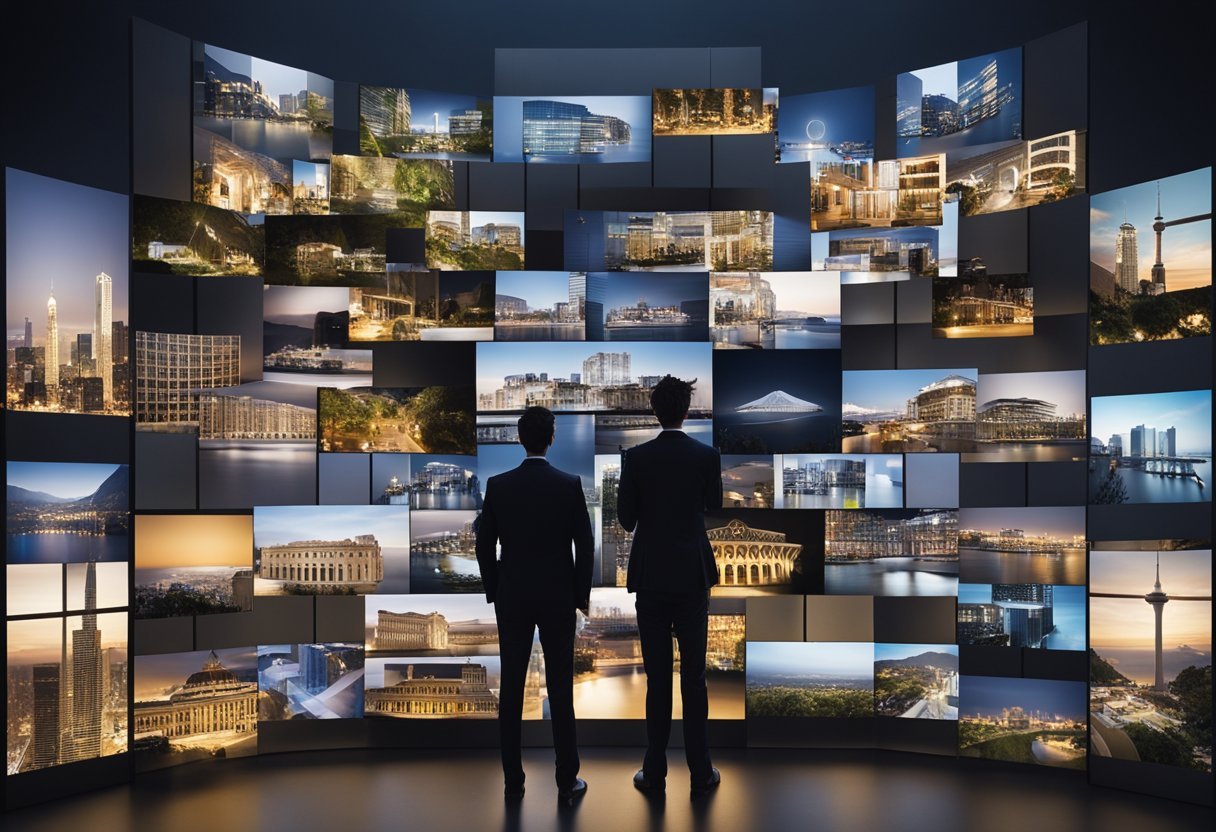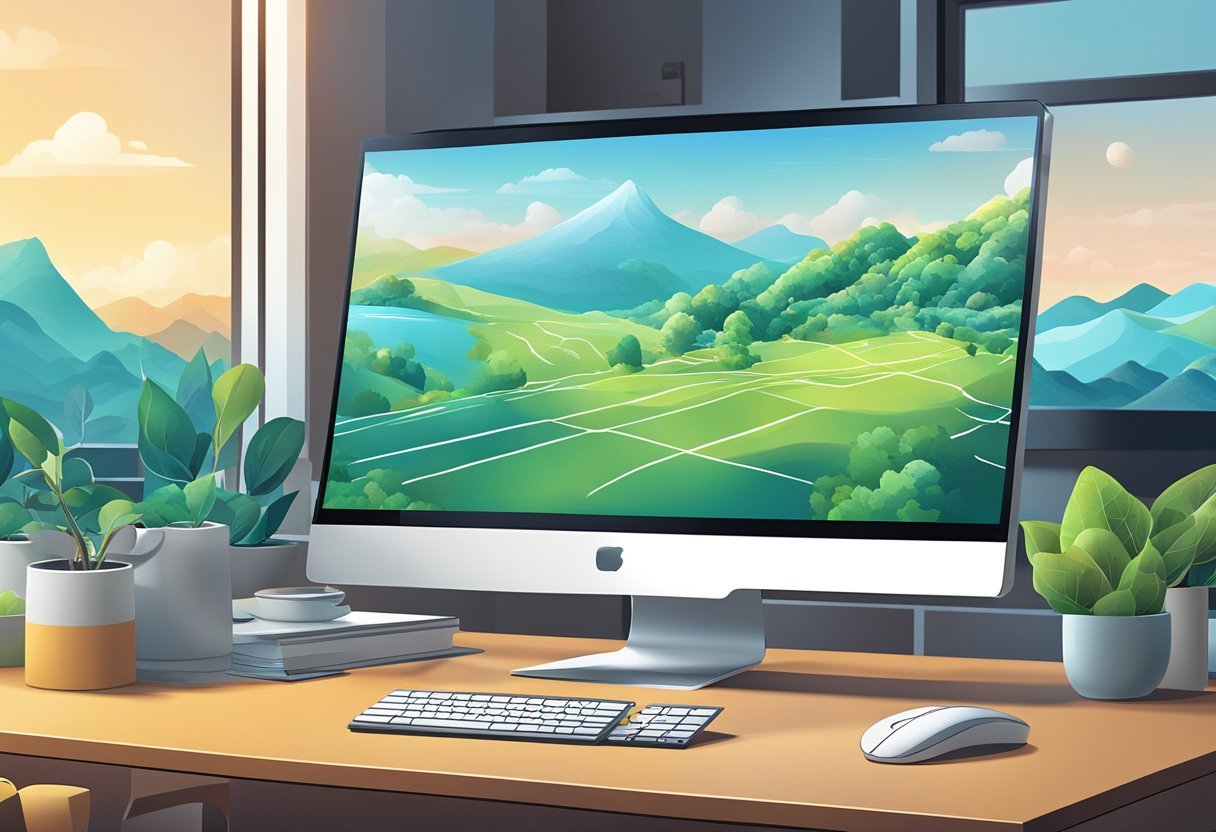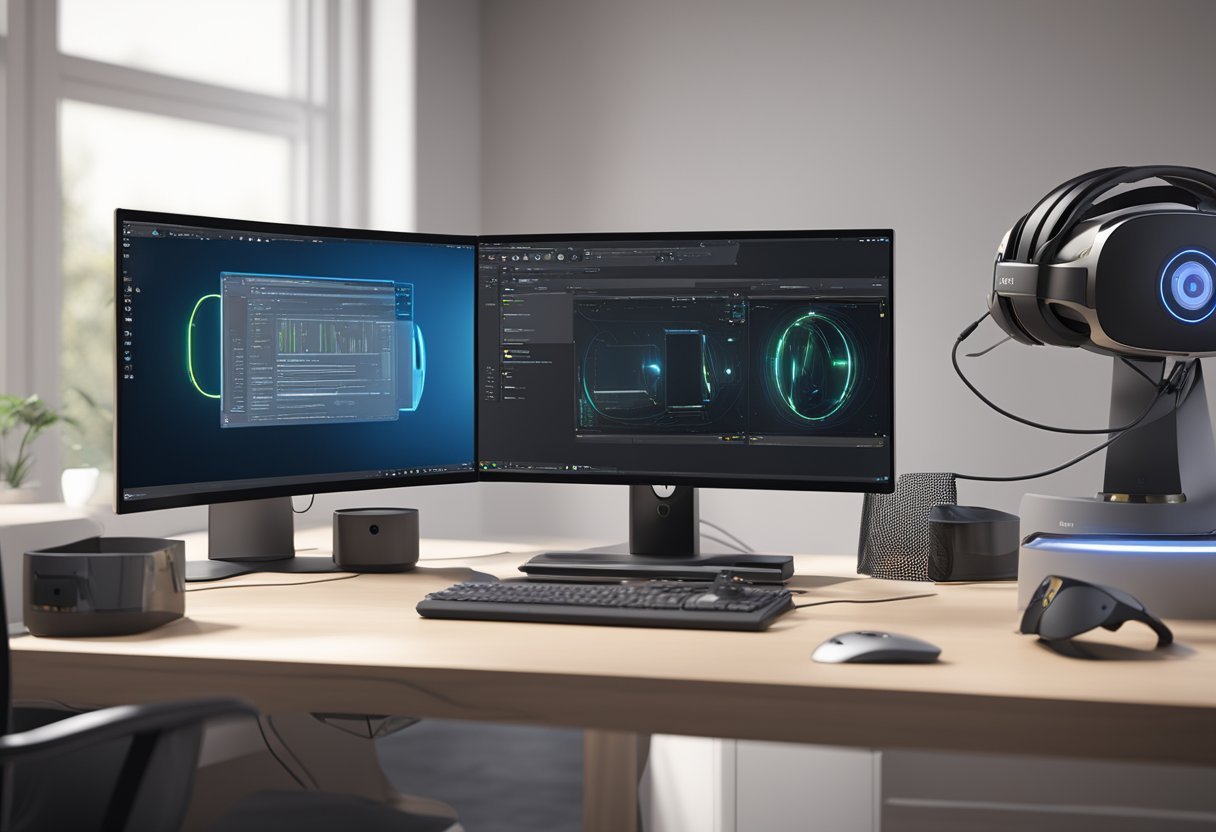Virtual staging has become an increasingly popular method of showcasing properties in the real estate industry. It involves digitally adding furniture, decor, and other design elements to photos of empty or sparsely furnished spaces. This technique is used to give potential buyers a better idea of what the property could look like if they were to furnish it themselves. But is virtual staging worth it?
One of the main advantages of virtual staging is its cost-effectiveness compared to traditional staging. Virtual staging is significantly cheaper than physically staging a property, which can cost thousands of dollars. Virtual staging is convenient and can be done quickly, often within 24 hours. It also allows real estate agents to showcase a property’s potential without the hassle of moving furniture in and out of the property. However, some argue that virtual staging can be misleading and may not accurately represent the size and layout of a property.
When considering whether virtual staging is worth it, it’s important to weigh the pros and cons. While it can be cost-effective and convenient, it’s important to ensure that the virtual staging accurately represents the property and doesn’t mislead potential buyers. Ultimately, the decision to use virtual staging should be based on the specific needs of each property and the preferences of the seller and real estate agent.
Understanding Virtual Staging
Virtual Staging vs. Traditional Staging
Virtual staging is the process of using computer software to create realistic images of furniture and decor in a vacant home. Traditional staging, on the other hand, involves physically moving furniture and decor into a home to make it more appealing to potential buyers.
One of the main differences between virtual and traditional staging is cost. Traditional staging can be quite expensive, as it involves renting furniture and hiring a professional stager. Virtual staging, on the other hand, is generally much more affordable.
The Process of Virtual Staging
Virtual staging typically involves taking photographs of a vacant home and then using specialized software to add furniture and decor to the images. The software allows the stager to choose from a variety of furniture styles and colors, so they can create a look that will appeal to the target demographic.
Once the images are complete, they can be used in online listings and marketing materials to help potential buyers visualize what the home would look like with furniture and decor.
Is Virtual Staging Worth It?
Virtual staging can be a cost-effective way to make a vacant home more appealing to potential buyers. It can also be a useful tool for real estate agents who want to market a property more effectively.
However, virtual staging does have its limitations. For example, potential buyers may be disappointed when they view the home in person and realize that the furniture and decor they saw in the images are not actually there. Virtual staging software is not perfect, and some images may look unrealistic or fake.
Virtual staging can be a useful tool for real estate agents and homeowners who want to make a vacant home more appealing to potential buyers. However, it is important to keep in mind that virtual staging is not a substitute for physically staging a home, and it may not be appropriate for all properties.
Benefits of Virtual Staging
Virtual staging is a cost-effective and fast way to stage a home for sale. It offers several benefits that can help attract potential buyers and increase the appeal of a property. The following are five benefits of virtual staging:
1. Aesthetic Appeal
Virtual staging can transform an empty or cluttered space into a visually appealing and well-designed room. It can showcase the potential of a property and help buyers envision themselves living in the space. Virtual staging can also highlight the best features of a room and make it look more spacious, brighter, and inviting.
2. Cost-Effective
Virtual staging is a more affordable alternative to traditional staging. It eliminates the need to rent furniture, hire a staging company, and pay for moving and storage costs. Virtual staging can save sellers thousands of dollars and help them sell their homes faster.
3. Quality
Virtual staging can offer high-quality images that are indistinguishable from real-life photos. It can provide buyers with a realistic and accurate representation of a property, without the need for physical staging. Virtual staging can also allow sellers to showcase their homes in a more polished and professional way.
4. Fast
Virtual staging can be completed in a matter of days, compared to traditional staging, which can take weeks or even months. It can help sellers list their homes faster and attract more potential buyers. Virtual staging can also help sellers save time and reduce the stress of preparing a home for sale.
5. Virtual Tour
Virtual staging can be combined with a virtual tour, which can provide buyers with a comprehensive view of a property. It can allow buyers to explore a home from the comfort of their own homes, at any time of the day. Virtual tours can also help sellers reach a wider audience and increase the chances of selling their homes at a higher price.
Virtual staging offers several benefits that can help sellers attract potential buyers and sell their homes faster. It can provide a cost-effective, high-quality, and fast way to stage a home for sale, while also showcasing its aesthetic appeal and offering a virtual tour.
Virtual Staging in Real Estate Marketing
Role of Virtual Staging in Listings
Virtual home staging is an innovative approach to marketing real estate properties. It involves creating digital images of furniture, decor, and other design elements to give potential buyers a realistic view of an empty space.
Virtual staging can help listings stand out and attract more attention from buyers. It can also make it easier for buyers to visualize themselves living in the space. According to the National Association of Realtors, 77% of buyers find it easier to visualize a property as their future home when it is staged.
Impact on Sales Price and Speed
Virtual staging has been shown to have a positive impact on the sales price and speed of real estate properties. A study by the Real Estate Staging Association found that staged homes sold for 6% to 20% more than non-staged homes.
Virtual staging can help sell homes faster. A survey by the National Association of Realtors found that staged homes sell 73% faster than non-staged homes.
Real Estate Agents and Virtual Staging
Real estate agents can benefit from virtual staging by offering it as a service to their clients. Virtual staging can help agents attract more clients and differentiate themselves from their competitors. It can also help agents sell homes faster and for a higher price.
However, it is important for agents to be transparent with their clients about the use of virtual staging. Agents should make sure that the virtual staging accurately represents the property and does not mislead potential buyers.
Virtual staging is a valuable tool in real estate marketing. It can help listings stand out, sell faster, and for a higher price. Real estate agents can benefit from offering virtual staging as a service to their clients. However, it is important to use virtual staging ethically and transparently.
Challenges and Considerations
Potential Misleading Impressions
One of the main concerns with virtual staging is that it can create misleading impressions. While virtual staging can make a property look stunning, it is important to remember that the images are not necessarily a true representation of the property.
Buyers may be disappointed when they see the property in person and find that it looks different from the virtual images. Therefore, it is important to ensure that the virtual staging images are not misleading, and that they accurately represent the property.
Quality and Authenticity Issues
Another challenge with virtual staging is ensuring that the images are of high quality and look authentic. Poor quality images can make a property look unappealing and unprofessional.
If the images look too fake or unrealistic, buyers may be put off by the property altogether. Therefore, it is important to choose a virtual staging company that produces high-quality images that look authentic.
Choosing the Right Virtual Staging Company
Choosing the right virtual staging company is crucial to ensuring that the images are of high quality and accurately represent the property.
It is important to choose a company that has experience in virtual staging and provides consultation services to ensure that the images are tailored to the property and the target market. It is important to choose a company that offers redraws if necessary, to ensure that the images are of the highest quality.
Virtual staging can be a great option for sellers who want to showcase their property in the best possible light. However, it is important to consider the potential challenges and to choose a reputable virtual staging company that produces high-quality, authentic images.
Frequently Asked Questions
What are the benefits of virtual staging for real estate marketing?
Virtual staging is an effective tool for real estate marketing because it allows potential buyers to visualize the potential of a space. It can help them to better understand how the space can be used and to see the potential of the property. Virtual staging is also more cost-effective than traditional home staging, making it an attractive option for sellers who are looking to save money.
How does virtual staging software compare to traditional home staging?
Virtual staging software has come a long way in recent years and can now produce high-quality, realistic images that are virtually indistinguishable from traditional staging. However, it is important to note that virtual staging cannot replicate the feel of a physical space, which is still an advantage of traditional home staging.
What is the average cost of professional virtual staging services?
The cost of professional virtual staging services can vary depending on the provider and the number of images needed. On average, virtual staging can cost anywhere from $29 to $200 per image. However, this is still significantly cheaper than traditional home staging, which can cost up to $5,000 or more.
Can homeowners effectively stage their homes using DIY virtual staging tools?
DIY virtual staging tools are available, but they may not produce the same quality of images as professional virtual staging services. Homeowners may not have the same level of expertise as professional virtual stagers, which could result in less effective staging. However, DIY virtual staging tools can be a cost-effective option for those on a tight budget.
What are some examples of virtual staging transforming a property’s appeal?
Virtual staging has been shown to be effective in transforming the appeal of a property. For example, virtual staging can help to show potential buyers how a small space can be used effectively or how an empty room can be transformed into a functional living space. Virtual staging can also help to create a cohesive design style throughout a property.
Are there opportunities for professionals in the virtual staging industry?
As virtual staging becomes more popular, there are increasing opportunities for professionals in the industry. Virtual stagers, photographers, and software developers are all in demand as more real estate agents and sellers turn to virtual staging to market their properties.




